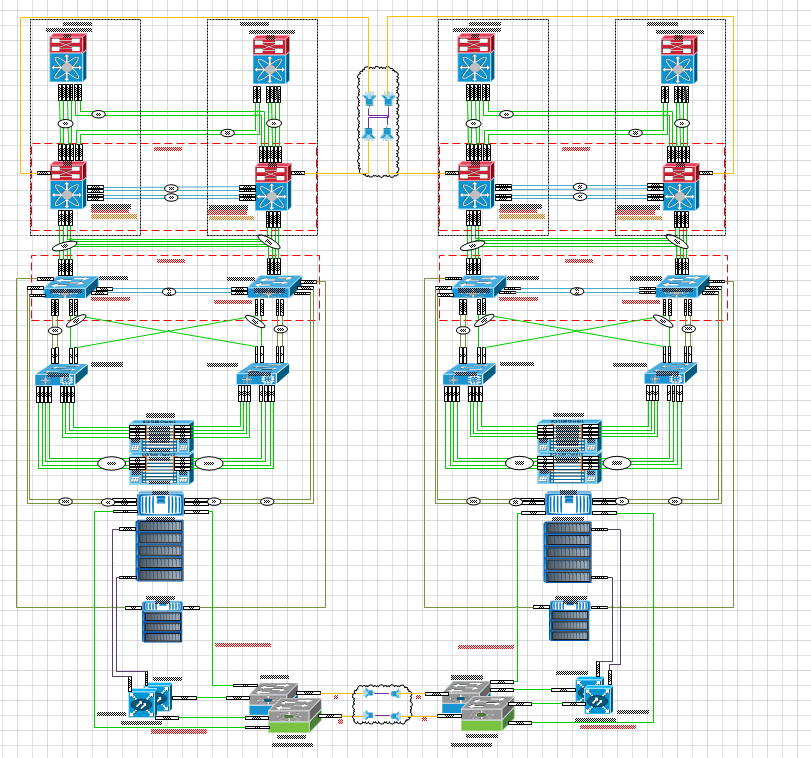As part of a recent data migration I had to enable a vfiler to allow iSCSI traffic as a number of virtual machines in the environment require block storage for clustering reasons. The vfiler already presents via NFS and iSCSI. As this is a test environment I’ve decided to put iSCSI on the same link as the NFS and CIFS. I know this is not normal best practice but given that the vLANs are already in place and that this is a test environment I decided to use the same IP address range. The servers accessing the iSCSI LUNs don’t have access to CIFS or to any NFS mounts already so there should be no traffic cross-over. So onto the steps to set it up:
Step 1: Allow iscsi protocol and RSH on vfiler (at vfiler0)
Check the status of the vfiler using the command
vfiler status -a tenant_vfiler
tenant_vfiler running
ipspace: tenant_vfiler_NFS_CIFS
IP address: 192.168.2.1 [a1a-107]
IP address: 192.168.2.2 [a1a-107]
Path: /vol/tenant_vfiler_vol0 [/etc]
Path: /vol/nfs03
Path: /vol/nfs04
Path: /vol/nfs02
Path: /vol/nfs01
Path: /vol/cifs01
Path: /vol/iso01
Path: /vol/iscsi_test
UUID: 93c62e36-4e76-11e4-8721-123478563412
Protocols allowed: 7
Disallowed: proto=rsh
Allowed: proto=ssh
Allowed: proto=nfs
Allowed: proto=cifs
Disallowed: proto=iscsi
Allowed: proto=ftp
Allowed: proto=http
Protocols disallowed: 2
Next run the command:
vfiler allow tenant_vfiler proto=iscsi
vfiler allow tenant_vfiler proto=rsh
Step 2: Start iSCSI protocol on vfiler (at apaubmwvfi01)
vfiler context tenant_vfiler
iscsi start
Step 3: Create a new volume at vfiler0
vfiler context vfiler0
vol create iscsi_test_vol -s 20g
Step 4: Migrate the volume to apaubmwvfi01 and log into the vfielr to check the volume status
vfiler add tenant_vfiler /vol/iscsi_test
vfiler context tenant_vfiler
vol status
Step 5: Set priv advanced and modify the exports to the correct settings as below
To modify the exports read the current /exports and write it back. Once done run the exportsfs -av command to push the changes out
rdfile /vol/tenant_vfiler_vol0/etc/exports
/vol/nfs01 -sec=sys,rw=192.168.1.0/24,anon=0
/vol/nfs02 -sec=sys,rw=192.168.1.0/24,anon=0
/vol/nfs03 -sec=sys,rw=192.168.1.0/24,anon=0
/vol/nfs04 -sec=sys,rw=192.168.1.0/24,anon=0
/vol/iso01 -sec=sys,rw=192.168.1.0/24,anon=0
/vol/iscsi_test -sec=sys,rw=192.168.1.0/24,anon=0
vfiler run tenant_vfiler exportfs -av
Step 6: Create a lun from the volume (iscsi_test)
vfiler run tenant_vfiler lun create -s 10g -t windows2008 /vol/iscsi_test/iscsi_lun
Step 7: Change filer and run lun show

Step 8: Verify iSCSI network within VMware has been assigned to the VM

Step 9: Enable iSCSI Initiator – grab the iqn

Step 10: Create an igroup with the iqn of the server
igroup create -t Windows2008 ds_iscsi
igroup add ds_iscsi iqn.1991-05.com.microsoft:microsoft:server.domain.com
Step 11: map the lun to the group name

Step 12: run lun show -m to check the mapping

Step 13: Run a quick connect to the IP address of the controller

And now your disk should appear in the disk manager on the server. It’s not too different to setting up a normal iSCSI connection but RSH must be enabled otherwise it can’t tunnel the iSCSI request to the vfiler iqn target.















